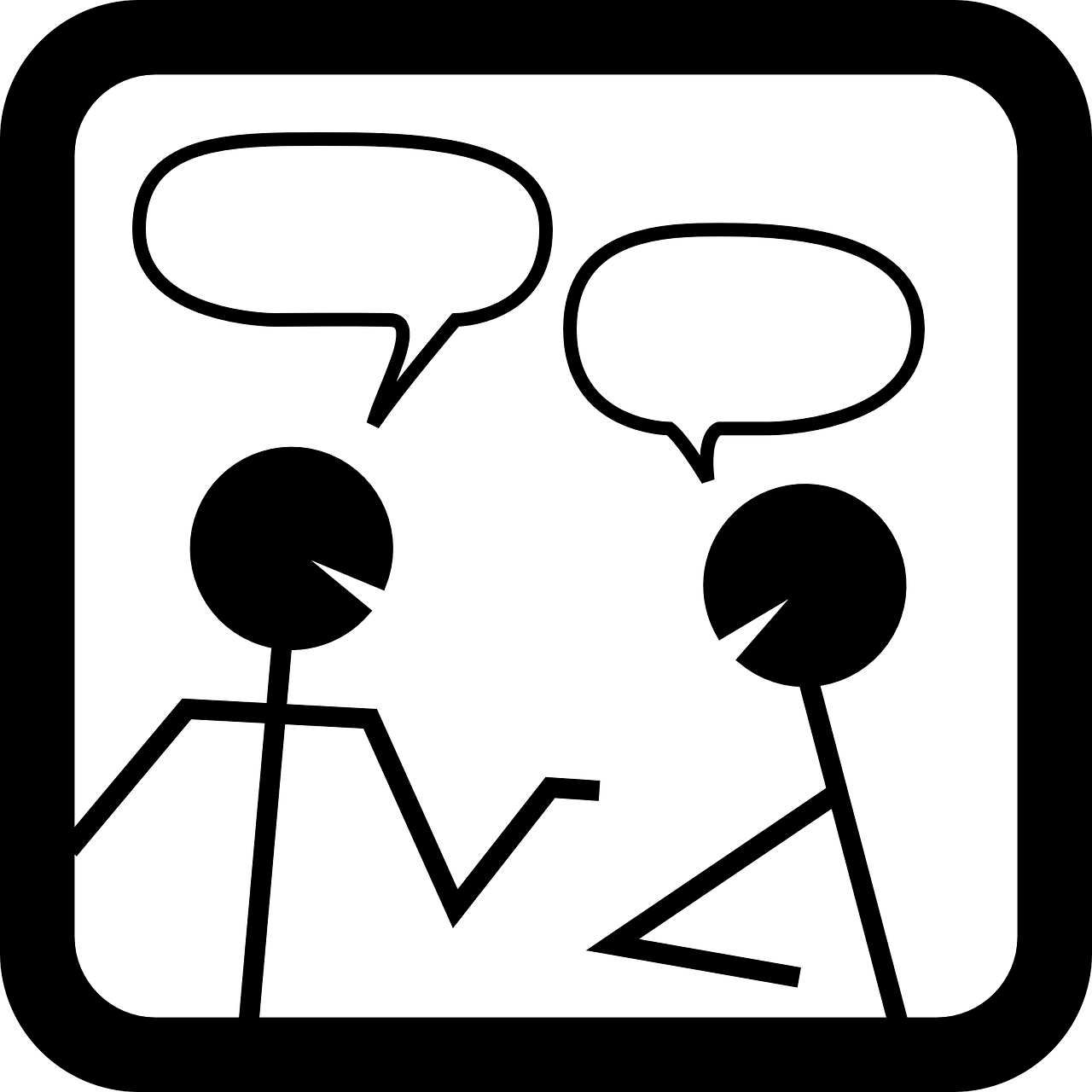Language Immersion and When To Use It For Fluency

If you research ‘language immersion’ or simply ‘immersion’ it’s often mentioned as a language education program aimed at bilingual education.
In the language learning community, the term is more largely debated as the act of submerging yourself in a daily routine and environment that’s surrounded by a second language in order to learn faster.
The idea is that you’ll emerge like a sponge soaking with new language knowledge.
You may be torn because on one hand, you’ve heard people say that this works extremely well but also voices saying this is a complete waste of your time.
Is immersion a pipe dream or can it actually work?
Let’s dive…
Content:
Different Stages of Immersion Unlocked
What is language immersion?

The idea is that if you get thrown into a daily context where in order to complete daily tasks, have a social life, even work, you need to have a crack at that second language in order to communicate. This is often referred to as an approach of ‘sink or swim’.
Because this is such a strong incentive you’re far more likely to actually focus on learning your target language and succeed, rather than flaking off and defaulting to the comfort of your native language.
On the flip side we still see examples where people have lived and been ‘submerged’ into a foreign language context, sometimes for years, and yet have managed to go about their lives without much need for anything other than a few very basic words in that foreign language.
So how is it that immersion in these cases doesn’t work?
I’d say because immersion is a step further. It’s not only being surrounded by a foreign language that you’re learning although that may be the starting stage.
Immersion has taken a beating for this several places online and has in some cases been written off as a myth to learning a language effectively.
The reason seems to be that people leave it at; “Just travel to a country where they speak the language you want to learn and you’ll be fluent in no time.” In that case, I agree, it’s a waste of your time.
You have to actually take action as with everything else in life in order to get results.
As someone who has experienced living with a second language, showed drastic improvements, it seems the intention has been misunderstood.
If anyone actually thinks they can just show up and automatically soak up a new language like some AI downloading knowledge from the main grid, then language immersion has been taking a beating for the wrong reasons.
Interaction is required to actually become fully immersed and reap the benefits.
On that note, it is possible to do something without relocating and changing your life.
Still, it certainly doesn’t mean that simply changing your surroundings to a different language, (and then doing nothing else), transports you into full immersion and fluency.
But done right it’s probably one of the biggest jumps you can take in language learning towards speaking fluently.
Does it Compliment Your Situation and Learning Style?

One of the challenges immersion programs have is that while students are taught several other skills in a second language to be fully in that context, they often defer to their first language in social settings outside class.
The point is that it’s difficult to stay fully immersed even when undertaking a program that’s structured for that very effect. Like students in these programs, you’re likely to ‘fall back’ into the comfort of your mother tongue from time to time.
That’s why deciding how far you’d actually go down this path is important to figure out if it could work for you, or not.
In order to take advantage of a ‘sink or swim’ opportunity you need to place yourself in a meaningful context to your surroundings – and the thing about being submerged in a language is, it works best slightly above your current level.
If you’re now considering embarking into any sort of country immersion then you must be crazy enough to want to actually learn a new language.
Before you dive in, consider this swimming belt. It’s your choice but… don’t say I didn’t warn you.
As someone who’s done this and both failed and learned, a supporting tool should work in a meaningful context.
Yes, it’s the app from this site and while assisted learning with split-screen text may not be the invention of a century, boy does it make your life easier if you’re a struggling beginner or a real visual learner. Plus the bare-bones is free.
If you end up liking it the premium access is about as much as a cheap round in a dive bar.
Speaking of learning in the right context.
You need enough understanding you can tie to the next thing you don’t know, to make a connection.
Say you’ve read the little prince many times and you remember the story perfectly well then by adding a new language you’ll still be able to pick up new words and meaning.
When maneuvering just close enough to the baseline of your language knowledge and diving into uncharted territories you’ll push your language level, in the ‘right way’, and that’s real immersion.
Different Stages of Immersion Unlocked

You could say there are different stages with some being more or less available depending on your situation.
I would argue these depend on; 1. The likelihood of using a second language and 2. How much time you spend interacting in that new language.
If you’re a new expatriate, someone relocated for work or maybe a long-duration traveler then you do have options that someone back home in a classroom or taking an online course doesn’t have the same access to.
Stage One
At this stage, you’re not spending much time engaging with the language you’re learning.
Typically your engagement into any language here is rehearsed and prepared sentences you can use in short scenarios like ordering food and drinks at a restaurant.
It should be said that you don’t need to travel to another country to unlock this stage.
It could be access to neighborhoods that primarily speak in the language you want to learn. A short trip to another country. Even, using ways to mimic language immersion.
The point is that most interaction here requires a lot of focus and energy on your end so it’s more like intermittent immersion. But it’s a great first stage for overcoming the fear of using a new language.
Most often you’ll have a supporting language course or something like Beelinguapp to help structure words and sentences you can use in everyday scenarios.
Stage Two
At this stage, around half of your time may be spent interacting inside a new language context.
This is the point where living in another country begins to show its benefits.
You’ll start having simple conversations with native and fluent speakers and understand major points when watching a movie or listening to music.
You have more interaction with the culture linked to your surroundings which adds an even stronger context for understanding.
At this stage, you require less energy and preparation in order to stay submerged with the new language. Your language level is good enough that you can pick up new understanding from exposure to everyday scenarios but you still defer back into your first language when things get complicated.
For example, you do fine at restaurants and ask for directions and short conversations without having prepared anything upfront as in the first stage.
Not so much in a fast-paced conversation laced with jokes and idioms, where you’ll likely be out of range for understanding.
Stage Three
At this stage, you’re fully immersed. This means pretty much all your time is spent in a second language.
Most likely you’re living in another country and you have a good grasp on casual conversations for most topics. Every run-of-the-mill task like cooking, shopping, reading the news or talking to the cab driver is in another language.
At this point, even bigger parts of your life are getting submerged in a second language or bilingual context which includes things like making new friends, dating and forming relationships.
It’s unlikely that you’ve reached this stage unless you’re living in another country.
If you’re someone who doesn’t live in another country but has a spouse, child, or long term partner who you speak to most of your day in another language, then you may still be near fully immersed.
This is a fast-paced highway to fluency and beyond because you’re not using your native language for the vast majority of your daily life.
Because your level is high enough at this point that you can constantly push your language ability further simply by living your life. Only, in another language.
Typically expats are the ones who have access to this immersion stage. You’ll be hard-pressed to spend as much time using a second language in your native speaking country.
When In Doubt Check If It’s Relevant

Repetition and practical use, in combination, are huge for making a new language stick like peanut butter and jelly.
But meaningful use is something that can be hard to come by.
You could come out under a rock of the most popular apps and courses only to realize; “So, people don’t actually say ‘whom’ when they speak?”
There’s a lot of language learning options out there. If you’re at the beginning stages then you can quickly round up sentences like this one my friend recently encountered on Duolingo for Danish;
‘Pigen drikker mandes saft.”
For your curiosity, this means, “The girl drinks the man’s juice.”
It’s not just that there seems to be a slight innuendo here. It’s more that you won’t end up using this in any (normal) conversation.
Unless you’re around an intermediate or advanced level you won’t easily separate the words and make a useful sentence.
[For more examples, Google “duolingo real weird examples” and go to the image tab.]
Joking aside, (nothing against Duolingo), if you find yourself in the trenches of a new language in a foreign country then here’s a couple (meaningful) steps you can grab by the horns right away.
Visit Local Language Cafes
There’s a ton of language exchange cafes in almost every country where you can go for a session immersed in that language.
Some places you have to pay and some you’re fine by ordering a small thing off the menu.
The reason why these are a good option is that very often local native speakers are working or volunteering at these cafes. The idea is you get one on one time with different people trying out a casual conversation in your new language.
People pay tutors good money for this kinda action.
It’s good because the style is often casual enough that you’ll move through several topics many times like introducing yourself, talking about your interests, what you do for work, etc.
Usually, the native speakers you meet here know to adjust for your speaking level which will challenge you just around that sweet spot of immersion.
Side note: This is (always) an exchange of languages so if you want all the focus on you, you might be better off with tutoring or a specific immersion program.
Still, I found it works great to translate and repeat words and sentences back and forth between each other. After all, it’s a friendly conversation. You just get to use a new language in a useful way.
You can find these simply by typing into Google, “free language cafes + (name of city)” or “language cafes + (name of city.)”
You can find these in your own country, however, in this case, you’re the local so it takes out the immersion part, but it could still be a good idea for finding language exchange partners.
(Mini)-Lessons From a Stranger

A true local is an obvious but often overlooked source for adding useful phrases to your language toolbox.
Not only are they native speakers, (or at least fluent), but they’ll show you how people from this area of the world would actually talk. Not your standard textbook example or something slightly uncanny like my friend’s Duolingo.
I’m not advising you run around like a looney with a pen and paper asking everyone for help with their language because you just moved here. But often a small icebreaker is all it takes to get a little help from a local stranger.
For example, say you’re in Spain and having lunch or breakfast somewhere. All the chit chat that comes with talking to the staff, asking how much it is, what you want, etc. That’s your in.
You can easily ask if they would be kind enough to write down; “how much is it?” or “do you have water?”
Whatever it is that you’re likely to be asking everywhere else you go.
Then politely ask them to pronounce it a few times so you can jot down phonetic sounds underneath.
That’s all it is. Nothing complicated.
Now you have a sentence you can use to interact throughout the day or week depending on how quickly you progress. Then do it all again with a new one.
Before you know it you’ll have reached the 80/20 to enter the next stage in your immersion.
Side note: If possible use as much as you know in that language when you interact as it shows that you’re trying so they’ll be more willing to help you out. Even if it’s just a simple ‘hello’.
Don’t go overboard and bring anyone ten pages to translate – no one likes that and if it was me I’d make sure you walked around insulting people for the rest of the day. Just ask for one simple useful phrase that you can use again.
Overlooking Cultural Guidance Will Cut Down Understanding
“When in Rome, live as the Romans do; when elsewhere, live as they live elsewhere.” – Saint Ambrose.
One of the things I realized after living abroad is that this quote, while most of the time applies to the best way for experiencing any country, is also true for learning their language.
On the basic level, the first thing you encounter is often the culture around food and drinks.
After having lived abroad in Vietnam this was one of the first immersion experiences that proved to be incredibly useful.
The best drinking or eating spots meant the most local too, (which is probably true for anywhere).
These places had no option for English menus nor would you be able to explain anything in English and most of the time there wouldn’t even be pictures to point at.
This was a trial and error method of going through different dishes, sometimes ending up with nothing like what you (actually) wanted.
After a while, this trial and error had turned into becoming successfully proficient in the food subdepartment.
What I didn’t realize at the time was that cultural context solidifies how a language is used.
For example, someone learning English may not know how a word or phrase is used without first being immersed in the culture.
The word ‘hot’ can mean both spicy, good looking, warm, an angry emotion, something that’s in style, even sexual arousal and more.
Or a simple phrase like, “How are you?”. It’s not intuitive, for someone learning English, that this is a greeting most of the time rather than an actual question.
These discoveries are made throughout the first stages of immersion but if you’re already fluent enough to be swimming through the cultural waves you probably see these connections all the time.
Don’t Forget – Interaction Is King

Unfortunately, one of the luring traps many people get caught in when trying to do language immersion in another country is making friends that only speak English. Or at least not the language of that country. So you’ll end up not getting to a fully immersed stage.
Going to places like language cafes or doing mundane tasks at a fully immersed stage will also help in reaching a local community that would otherwise be lost in the comfort of your native language.
The more you interact the more reason and opportunity you have to immerse yourself even deeper in any second language.
Herodotus , widely regarded as the first historian and traveler, is quoted for saying, “Custom is king.” – and if you want language immersion to work, you should be its loyal subject.


